Introduction to the Concept of “Ambulance Chasing”
Ambulance chasing is a term used to describe unethical behavior by some lawyers who actively seek out accident victims to offer legal services. These lawyers follow ambulances to hospitals or accident scenes to convince injured people to file lawsuits. This aggressive solicitation of clients is seen as improper because it preys on vulnerable people during difficult times.
This practice is strongly associated with unethical legal practices because it violates professional standards in many areas. Lawyers are expected to offer their services in a respectful and ethical manner, without exploiting people’s misfortunes. Ambulance chasing goes against these values by using someone’s suffering for financial gain.
The image of a lawyer chasing an ambulance symbolizes this behavior. It paints a picture of a lawyer literally running after an ambulance, trying to catch up with potential clients. This image has become a widely recognized symbol of unethical legal behavior and is often used in satire to criticize aggressive legal advertising.
History of Ambulance Chasing in Legal Culture
Origin of the Term “Ambulance Chasing”
The term ambulance chasing originated in the early 20th century. It was used to describe lawyers who would literally follow ambulances to accident scenes or hospitals to solicit injured individuals for legal services. This term quickly became a metaphor for lawyers engaging in unethical practices to find clients in vulnerable situations. Over time, ambulance chasing has come to represent all forms of aggressive legal solicitation, especially when lawyers target accident victims or their families.
Historical Examples of the Practice
Historically, ambulance chasing was more widespread before stricter regulations were enforced. In earlier times, some lawyers would station themselves near accident-prone areas or hospitals, seeking out potential clients. This behavior became more visible with increased urbanization and the rise of car accidents, where lawyers would target victims of road collisions. Such aggressive methods often included sending agents or “runners” to gather clients, an unethical practice that tarnished the legal profession’s reputation.
How This Behavior Has Impacted Public Perceptions of Lawyers
The practice of ambulance chasing has significantly damaged the public’s view of lawyers. It reinforces negative stereotypes about attorneys being opportunistic and profit-driven, with little regard for their clients’ well-being. The image of a lawyer chasing an ambulance symbolizes exploitation, making it harder for the legal profession to build trust with the public. Many people associate this practice with greed and unethical conduct, which has led to stricter rules in legal advertising and client solicitation to improve the image of the profession.
Visualizing the Lawyer Chasing an Ambulance
The Symbolism Behind This Image
The image of a lawyer chasing an ambulance carries deep symbolic meaning. It represents the stereotype of unethical lawyers aggressively seeking out clients in vulnerable situations, such as accident victims. The lawyer is seen as opportunistic, prioritizing profit over compassion, which highlights greed and exploitation. The ambulance in this image symbolizes emergency and tragedy, making the lawyer’s pursuit seem even more unethical. This visual is often used to criticize unethical legal practices and reinforce negative perceptions of the profession.
Why the Imagery is Powerful in Representing Unethical Legal Advertising
This imagery is powerful because it exaggerates the unethical behavior of certain lawyers, making it clear how improper and exploitative ambulance chasing is. The visual of a lawyer running after an ambulance draws attention to the aggressive methods used by some attorneys to find clients in distress. It is a strong, negative portrayal of legal advertising that crosses ethical boundaries. This image is not only a visual metaphor for unethical practices but also serves as a warning about the consequences of such behavior on the legal profession’s integrity.
Examples of How This Image is Used in Pop Culture and Satire
The image of a lawyer chasing an ambulance has been widely used in pop culture and satire to critique the legal industry. Cartoons, television shows, and movies often depict lawyers in this exaggerated scenario to emphasize unethical behavior. For example, in many satirical cartoons or skits, lawyers are humorously shown running after ambulances, briefcase in hand, to symbolize the stereotype of “greedy lawyers.” This imagery is used to make fun of legal advertising tactics and bring attention to the need for ethical standards in the profession.
This visual metaphor has also appeared in editorial cartoons, where it’s used to critique the over-commercialization of legal services. By exaggerating the idea of lawyers chasing ambulances, these satirical pieces underscore the importance of professionalism and ethics in the legal field.
Why the Image of a Lawyer Chasing an Ambulance is Controversial
Legal Ethics and the Problem with Aggressive Client Solicitation
The image of a lawyer chasing an ambulance is controversial because it highlights unethical practices in the legal field, particularly aggressive client solicitation. This behavior violates many legal ethics rules, as lawyers are expected to act with integrity and professionalism. Ambulance chasing refers to the practice of pursuing clients, especially accident victims, immediately after an injury. This kind of solicitation is seen as predatory because it takes advantage of people when they are most vulnerable. Many legal codes of ethics, including the American Bar Association (ABA) Model Rules of Professional Conduct, strictly prohibit lawyers from engaging in such behavior.
How the Legal Community Views “Ambulance Chasing”
Within the legal community, ambulance chasing is widely condemned. Lawyers are expected to maintain ethical standards and avoid solicitation that can harm the profession’s reputation. Many bar associations have implemented rules that restrict or prohibit unsolicited contact with accident victims to prevent such practices. The legal community views ambulance chasing as damaging to the profession because it reinforces negative stereotypes about lawyers being solely motivated by profit. Ethical lawyers distance themselves from this behavior to preserve the dignity of their profession and build trust with clients.
Legal Consequences of Ambulance Chasing in Certain Jurisdictions
In many jurisdictions, ambulance chasing is illegal, and lawyers who engage in this behavior face serious legal consequences. For example, in the United States, various states have enacted anti-solicitation laws that prohibit lawyers from directly approaching accident victims or their families. Violating these laws can result in disciplinary actions, such as fines, suspension, or disbarment. Some states also have specific regulations that address ambulance chasing, including penalties for hiring agents or “runners” to solicit clients on behalf of law firms. The consequences aim to protect the public from exploitation and maintain ethical standards in the legal profession.
How to Create an Image of a Lawyer Chasing an Ambulance
Tips for Graphic Designers or Marketers to Create a Visually Striking Image
When creating an image of a lawyer chasing an ambulance, designers should aim for a balance between humor and critique. To make the image visually striking:
- Focus on bold, clear imagery that immediately conveys the absurdity of the scenario.
- Use exaggerated movements or facial expressions to emphasize the urgency and opportunism of the lawyer.
- Choose a color palette that enhances the contrast between the ambulance (symbolizing emergency) and the lawyer (symbolizing opportunism). Bright colors or sharp contrasts can draw attention to the main action.
- Incorporate dynamic motion, such as the ambulance speeding away and the lawyer running frantically behind it.
Key Elements to Include
- Lawyer in a Suit: The lawyer should be dressed in a traditional business suit, holding a briefcase or legal documents, to clearly identify the character as a professional attorney. The formal attire contrasts humorously with the absurdity of the situation.
- Ambulance in Motion: The ambulance should be depicted in motion, with wheels blurred or smoke trailing to emphasize speed. This visual highlights the opportunistic chase.
- Exaggerated Facial Expressions: Exaggerate the lawyer’s facial expression to make them appear desperate or eager, reinforcing the humor. This adds a satirical tone, showing the lawyer as willing to go to any lengths to catch the ambulance.
- Contextual Cues: Add background elements like a cityscape or hospital to ground the image in reality, but keep the focus on the interaction between the lawyer and the ambulance.
How to Use the Image in a Humorous, Yet Thought-Provoking, Way
The image of a lawyer chasing an ambulance should be used in a humorous, yet critical way to provoke thought about unethical legal advertising. This image can serve as a satire on the legal profession, highlighting the absurdity of aggressive client solicitation.
- The humor lies in the ridiculousness of a professional lawyer physically running after an emergency vehicle, which makes a serious point about exploitation and opportunism.
- Ensure the tone remains light, but the underlying message critiques unethical behavior.
- This type of image can be used in editorials, blog posts, or social media campaigns that discuss legal ethics, client exploitation, or misleading advertising in a way that’s engaging and shareable.
Satire and Humor in Legal Advertising
How Satire Plays a Role in Discussing Serious Legal Issues
Satire is a powerful tool in legal advertising because it allows for the discussion of serious topics, such as ethics and exploitation, in a humorous way. Satire uses exaggeration and irony to criticize unethical practices, making complex legal issues more accessible and engaging for the public. In the context of legal advertising, satire can draw attention to the problems of aggressive solicitation, misleading claims, or ambulance chasing, without coming across as overly critical or dry. By using humor, lawyers and advertisers can raise awareness of important ethical concerns while still capturing the audience’s attention.
Examples of Satirical Legal Ads That Use Humor to Criticize Unethical Practices
Several satirical legal ads effectively use humor to criticize unethical legal behavior:
- Ambulance-Chasing Cartoons: Many cartoons show lawyers literally chasing ambulances as a way to mock this unethical behavior. These exaggerated visuals critique the practice by making it seem absurd.
- Fictitious Law Firms: In some ads, fictional law firms are created to poke fun at unethical practices. For example, a fake ad might show a law firm promising unrealistic results, using absurd promises to highlight the problem of false advertising in legal services.
- Humorous Taglines: Some law firms use humorous taglines to indirectly critique unethical practices in their own industry. By doing so, they position themselves as ethical while making fun of less scrupulous competitors.
How to Balance Humor with Professional Messaging
Balancing humor with professionalism in legal advertising is critical. While humor and satire can make ads memorable and engaging, it’s important that the overall message remains respectful of the legal profession and the clients it serves. Here are a few ways to maintain this balance:
- Keep It Light, Not Offensive: Use humor to critique practices, not individuals. The focus should be on pointing out flaws in the system rather than attacking specific lawyers or clients.
- Professional Visuals: While the message may be humorous, the visuals should still maintain a level of professionalism. This helps communicate that, despite the satire, the firm takes its work seriously.
- Clear Call to Action: Ensure that the ad concludes with a clear, serious message about the firm’s own services and ethical standards. This can include emphasizing integrity, trustworthiness, and dedication to clients.
Using humor in legal advertising is effective when done tastefully, allowing firms to stand out while also addressing serious industry issues.
Legal Advertising and Ethical Boundaries
Overview of Legal Advertising Rules and How They Relate to the Concept of Ambulance Chasing
Legal advertising is subject to strict rules to maintain professionalism and protect potential clients from exploitation. Ambulance chasing, which refers to lawyers directly approaching accident victims to solicit their services, is considered unethical and is prohibited by most bar associations. Advertising rules often prohibit solicitation that is overly aggressive, misleading, or intrusive, and ambulance chasing falls squarely into this category.
Under the American Bar Association (ABA) Model Rules of Professional Conduct, for example, lawyers are barred from in-person, telephonic, or real-time electronic solicitation of accident victims or their families unless there is a prior relationship. These rules are designed to prevent lawyers from taking advantage of vulnerable individuals and to promote ethical standards in the legal profession.
Regulations in Different States or Countries That Prevent Unethical Advertising Practices
The rules on legal advertising and solicitation vary from place to place, but most jurisdictions share common principles to prevent unethical practices:
- United States: Most U.S. states follow the ABA’s Model Rules, which include specific prohibitions on direct solicitation and misleading advertising. Many states also have additional laws that prevent lawyers from contacting accident victims within a certain time frame after the accident. For example, in Florida, lawyers cannot solicit personal injury clients within 30 days of an accident.
- United Kingdom: The Solicitors Regulation Authority (SRA) in the UK has strict rules governing how solicitors can advertise their services. They must avoid making misleading claims or taking advantage of clients’ vulnerabilities, similar to the U.S. approach.
- Canada: Canadian provinces have their own legal advertising rules. For instance, in Ontario, the Law Society of Ontario requires that legal advertising must be accurate, verifiable, and not misleading. There are specific prohibitions on soliciting accident victims directly.
How Lawyers Can Ethically Advertise Their Services Without Crossing Boundaries
Lawyers can still advertise their services effectively while remaining within ethical boundaries by focusing on the following principles:
- Transparency and Honesty: Lawyers should provide clear, factual information about their services without making guarantees or unrealistic promises. They should focus on explaining their qualifications and how they can help potential clients.
- Respect for Privacy: Avoiding aggressive solicitation means not contacting individuals directly after accidents. Instead, lawyers can use indirect marketing methods like websites, blogs, and ads to inform people of their services.
- Content Marketing: Lawyers can create valuable content (articles, videos, or blogs) that educates the public about legal rights and options, helping potential clients make informed decisions.
- Digital and Social Media Marketing: Many lawyers use social media platforms, SEO, and paid search advertising to reach potential clients ethically. These strategies rely on clients seeking out information on their own rather than being solicited directly.
The Impact of Ambulance Chasing on the Legal Profession
How This Practice Affects Public Trust in Lawyers
Ambulance chasing severely damages public trust in lawyers. When lawyers aggressively pursue accident victims, it reinforces negative stereotypes that portray attorneys as opportunistic and motivated solely by profit. This behavior undermines the integrity of the legal profession by prioritizing financial gain over the well-being of clients. As a result, many members of the public perceive the legal profession as exploitative, which can lead to a general mistrust of lawyers, even those who operate ethically.
The practice creates an image of lawyers as “ambulance chasers” who are willing to exploit vulnerable people during their most difficult moments. This perception leads to skepticism about the motives of lawyers and discourages individuals from seeking legal help, even when they genuinely need it.
The Potential Harm to Clients from Aggressive Legal Solicitation
Aggressive legal solicitation, like ambulance chasing, can have a negative impact on clients. Victims of accidents are often in physical or emotional distress, and lawyers who pressure them to file lawsuits may not be acting in the clients’ best interests. These clients may feel rushed into making legal decisions without fully understanding their rights or the legal process. In some cases, victims may end up with inadequate legal representation or settlements that do not fully address their needs.
Additionally, the aggressive nature of ambulance chasing can leave clients feeling manipulated or exploited, which can harm their overall trust in the legal process. Rather than receiving compassionate and professional assistance, clients may see their interaction with lawyers as purely transactional, leading to negative experiences with the legal system.
Efforts by the Legal Community to Combat Ambulance Chasing
The legal community has made significant efforts to combat ambulance chasing and restore public trust. Bar associations and legal regulatory bodies have established strict rules and disciplinary actions to prevent this behavior. For example:
- The American Bar Association (ABA) has created the Model Rules of Professional Conduct, which prohibit direct solicitation of accident victims. These rules are enforced by state bar associations, which can take disciplinary action against lawyers who violate them.
- Some states have introduced specific laws to restrict direct solicitation after accidents. In Florida, for example, lawyers are barred from contacting accident victims for 30 days after an accident, ensuring that victims are not targeted during a vulnerable time.
- Legal education programs and professional ethics courses emphasize the importance of maintaining ethical standards, encouraging lawyers to focus on client well-being rather than profit-driven practices.
By enforcing these rules and promoting ethical behavior, the legal community aims to restore its reputation and ensure that clients receive proper representation without being subjected to exploitation or manipulation.
Alternatives to Ambulance Chasing for Legal Marketing
Ethical Ways for Lawyers to Build Their Reputation
Building a strong, ethical reputation is essential for long-term success in the legal profession. Instead of relying on aggressive tactics like ambulance chasing, lawyers can focus on establishing trust through:
- Referrals: Encouraging satisfied clients to refer others is one of the most ethical and powerful ways to grow a legal practice. Word-of-mouth recommendations from trusted clients or colleagues help build credibility.
- Community Involvement: Lawyers can enhance their reputation by participating in community outreach, pro bono work, or volunteering. Being involved in local causes shows commitment to the community and builds goodwill.
- Legal Expertise: Specializing in a niche area of law and consistently delivering high-quality results can set a lawyer apart. Publishing articles, speaking at conferences, or contributing to legal publications also helps establish a lawyer’s expertise.
How Digital Marketing, Social Media, and Content Marketing Offer Better Alternatives
Digital marketing offers lawyers several ethical and effective ways to reach potential clients without the need for direct solicitation:
- Content Marketing: Lawyers can create valuable content such as blog posts, legal guides, or videos that educate the public on legal matters. This not only positions them as knowledgeable but also allows potential clients to find them organically through searches related to their legal needs.
- Social Media: Platforms like LinkedIn, Facebook, and Twitter are excellent for networking and engaging with potential clients. By sharing legal insights, news, and firm updates, lawyers can build a strong online presence and connect with their audience.
- SEO and Paid Search: Search engine optimization (SEO) and paid search (e.g., Google Ads) help law firms rank higher on search engine results pages when potential clients look for specific legal services. This allows law firms to ethically attract clients who are actively seeking help without aggressive outreach.
Tips for Law Firms to Market Ethically and Effectively
- Transparency and Honesty: Always be clear about the services offered and avoid making unrealistic promises. Provide accurate information about legal outcomes, fees, and processes to build trust.
- Use Testimonials: Client testimonials and case studies can be powerful marketing tools that showcase positive experiences without violating ethical boundaries.
- Educational Webinars and Workshops: Hosting free webinars or in-person legal workshops is a great way to provide value while building a lawyer’s reputation as an expert.
- Follow Ethical Advertising Guidelines: Ensure that all marketing materials comply with the advertising rules set by local bar associations, such as avoiding misleading information or targeting vulnerable individuals.
By using these strategies, law firms can grow their business while maintaining their ethical obligations, fostering trust, and attracting clients organically.
Conclusion
The image of a lawyer chasing an ambulance has become a powerful symbol of unethical legal practices like aggressive client solicitation. This behavior not only damages public trust in lawyers but also risks harming clients by prioritizing profit over genuine care. As a result, legal communities across the world have implemented strict rules to prevent such practices.
FAQs
What does the phrase “ambulance chasing” mean?
Ambulance chasing refers to the unethical practice of lawyers aggressively seeking out accident victims to offer their legal services, often immediately after the incident. It is considered exploitative and is prohibited by most legal ethics codes.
Why is the image of a lawyer chasing an ambulance so powerful?
The image of a lawyer chasing an ambulance symbolizes unethical behavior and opportunism in the legal profession. It represents lawyers prioritizing profit over clients’ well-being and reinforces negative stereotypes about the legal industry.
Is ambulance chasing illegal?
In many jurisdictions, ambulance chasing is illegal. For instance, the American Bar Association and various state bar associations prohibit direct solicitation of accident victims. Violations can lead to disciplinary actions, including fines or disbarment.
How can lawyers market themselves ethically?
Lawyers can engage in ethical marketing by creating valuable content, using digital platforms like websites and social media, and focusing on transparency and client testimonials. They should follow legal advertising guidelines to avoid misleading or aggressive tactics.
How does ambulance chasing affect public perception of lawyers?
Ambulance chasing damages the public’s trust in lawyers by reinforcing the stereotype that lawyers are exploitative and solely focused on profit. This negative image makes it harder for ethical lawyers to build positive relationships with clients.
What are the legal consequences for ambulance chasing?
Lawyers found engaging in ambulance chasing may face serious legal consequences, including fines, suspension, or disbarment, depending on the jurisdiction. Various states and countries have specific regulations that address this practice to maintain professional ethics in the legal field.


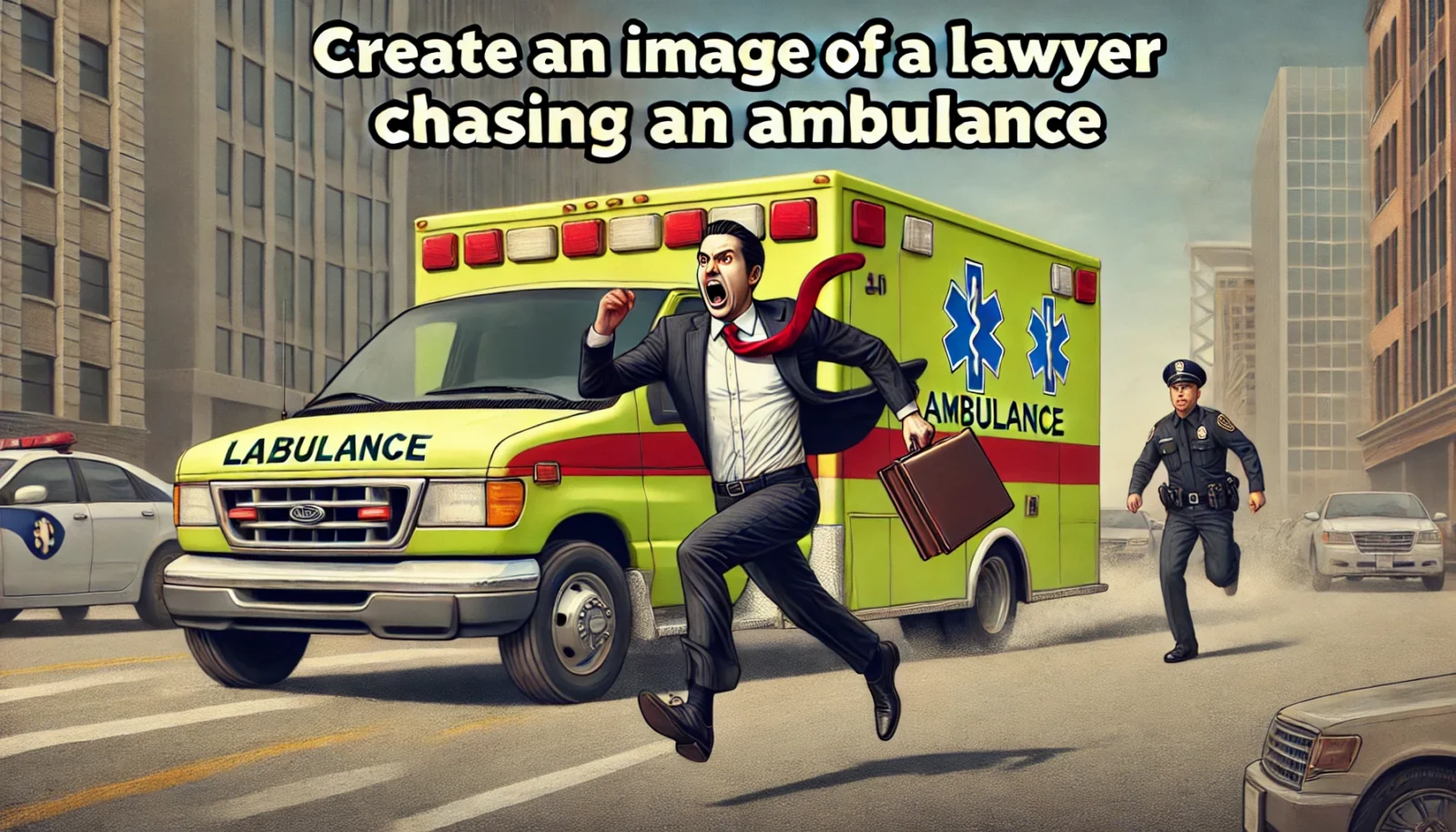


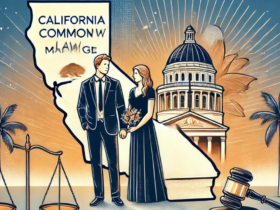

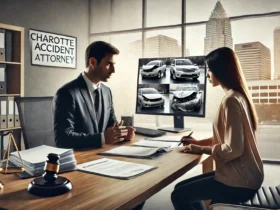




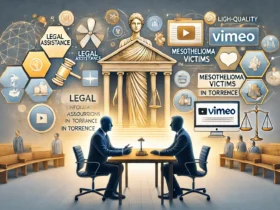
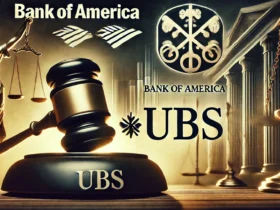
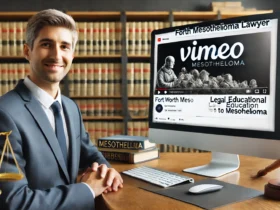

Got a Questions?
Find us on Socials or Contact us and we’ll get back to you as soon as possible.